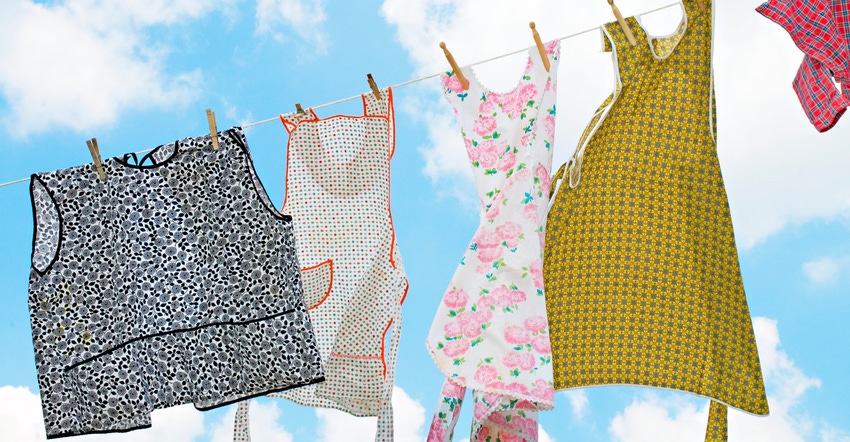July 14, 2018

By Susan Hayhurst
Do you remember your grandma or mom wearing an apron? Do you know why they wore them?
Aprons were a practical necessity in the early 1800s. Women didn’t own many dresses. Washing clothes was done minimally, and aprons protected women’s dresses underneath.
The 1920s and ’30s brought handmade aprons from feed sacks that had held farmers’ seed or flour. By the 1940s and ’50s, the half apron became popular, with many being made from feminine prints and adorned with pockets and lovely, frilly trims.
According to sharonglasgow.com, aprons were used for countless reasons, including serving as a potholder to remove hot pans from the oven, carrying eggs and fussy chicks from the chicken coop, bringing in apples that had fallen from the trees, and waving it to let the men know it was time to come in from the fields to dinner.
While no one in my immediate family wore an apron to help tend to livestock or clean out my dirty ears, I do remember my mom and paternal grandma wearing aprons often as they cooked together in the kitchen, preparing wonderful holiday meals.
Perhaps the most meaningful apron story I’ve read is that of Susannah Wesley, mother of noted sons John and Charles Wesley. She had 19 children, with 10 surviving. Susannah had her hands full raising the family mostly by herself, as her husband, a pastor, traveled frequently. She promised the Lord she would pray two hours a day, but struggled to find a quiet place to retreat to pray. She then advised her children that when they saw her with her apron over her head, that meant she was in prayer and couldn’t be disturbed.
I think I need to put an apron over my head more often.
Hayhurst writes from Terre Haute, Ind.
You May Also Like




